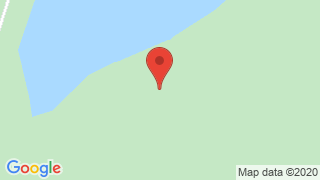Limoncocha Lagoon


Limoncocha Ecuador
What do you need to know?
- The Limoncocha Lagoon is located in Shushufindi, Sucumbios, in the Limoncocha Biological Reserve that has 4,613 hectares full of tropical rainforest where you can hike. Its abundant fauna and flora has attracted the interest of scientists and tourists. In 1998, 100% of the area was declared a Ramsar Wetland.
- In 1985 it was declared a protected area. It is composed mainly of the Limoncocha lagoon, formerly called Capucuy, and the Negra or Yanacocha lagoon. At a temperature of 25ºC, globetrotters will enjoy a varied fauna that includes palms such as the chambira and ungurahua, timber trees, epiphytes, cat's claw, bromeliads, orchids, mosses and lianas. It also has a secondary forest of ceibo and cedar.
- The area has 53 species of mammals, 144 of birds, 92 of amphibians and reptiles and 93 of fish. Jaguars and tigrillos, as well as bats, abound throughout the area. On the El Caimán trail and around Yanacocha you can see tapirs, deer and monkeys, amphibians such as frogs, toads and salamanders, and reptiles such as lizards, blind snakes, caimans, snakes and turtles. The area is also the habitat of thousands of birds.
- Some of the species are kingfishers, tickers, herons, hoatzins, parakeets, parrots, macaws and red and yellow headed hens. The Napo River, the Capucuy River and the Limoncocha Interpretation Center are other attractions in the area.
- It represents an important tourist and scientific attraction due to the great floristic diversity and especially the fauna that it possesses, being a suitable place for the observation of aquatic birds, fish and turtles; while in the night, it is an ideal place to clear up.
Limoncocha Reserve
Limoncocha lagoon water, which is only a part of the Limoncocha Biological Reserve with the same name, is key to the existence of bird species, such as the toucan, or the cedar tree, which are in danger of extinction.
Formerly called Capucui. It is a real lake, formed by an old arm of the Napo river, closed hundreds of years ago by alluvial lands and covered later by vegetation until becoming impenetrable jungle. In addition to the lagoon itself, there is a smaller one with the same characteristics and another called Yanacocha or Laguna Negra, for the color of its waters, which is none other than the waters of the Capucui River.
Private entities, such as the SEK University of Quito, frequently visit the area to monitor birds, fish and black caimans. The Limoncocha Lagoon is the site of the entire Amazon, where black caimans are most abundant. SEK is currently building its cabins next to the Reserve's offices.
Limoncocha Lagoon location: It is located 50 km from the cantonal capital, in the parish Limoncocha - Canton Shushufindi - Province Sucumbios.
Limoncocha Lagoon how to get there
- From Quito The cities of Lago Agrio (260 km) or Francisco de Orellana/Coca (290 km) must be reached from where you leave to enter the reserve. These cities can also be reached by air (35 minutes).
- From Lago Agrio take the road Lago Agrio - Shushufindi - Pompeya. At Km 31 of this road, after passing the town of Shushufindi, is the entrance to the protected area.
- From Coca You navigate along the Napo River to the Kichwa community of Pompeii. The trip takes three hours. From here you take the road to Shushufindi until you reach the entrance of the Reserve at Km 31. You can also enter by land by the road Coca - Sacha - Shushufindi - Pompeii (110 km).
Limoncocha Lagoon flora and fauna
- Flora lagoon life zones correspond to Tropical humid forest, in the same one that they are distinguished trees of limoncocha and vegetal formations, forest always green of low lands, always green forest of low lands flooded by black waters and lacustrine herbazal of low lands, the same ones that are vegetal formations that reach up to 3 meters of height and they are around the lagoon.
- Fauna The fauna is represented mainly by black caimans, there are also in the area with a length of up to 6 meters boas, anacondas and a group of birds such as the needle duck, great egret, heron ox, among other species.
What to wear in Limoncocha Lagoon
- Comfortable and light clothing for walking along the trail and for the boat trip.
- Cap or hat, sunscreen and repellent, the latter for night tours.
- Camera, video and binoculars to see the species from the lagoon.
Limoncocha, Before 1985, Limoncocha was an unexploited extension that was not even considered a Ramsar site by UNESCO, as it is now.
Limoncocha History. In 1998, 100% of the area was declared a Ramsar Wetland. In 1985 it was declared a protected area. It is composed mainly of the Limoncocha lagoon, formerly called Capucuy, and the Negra or Yanacocha lagoon.
Limoncocha Lagoon Attractions
The lagoon of Limoncocha, black lagoon or Yanacocha, has a surprising biological diversity. Alluvial plains due to erosion and deposits of material from the Andes, flood plains and swampy areas.
- Islands and beaches of the Napo River; the entire lake system is part of the Napo River basin, using it as a transit zone for tourist boats.
- Rio Curaray or Cupucuy, have flora and fauna in their natural state, in this place you can observe parrots and macaws.
- The lagoon of Limoncocha is a place apt for observations of aquatic birds, fish and insects, good place to find caimans and turtles among the lechuguines that populate its surface.

Publicado en:
Publicado por:




